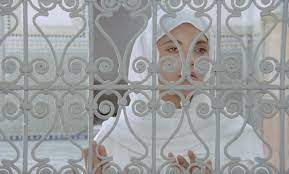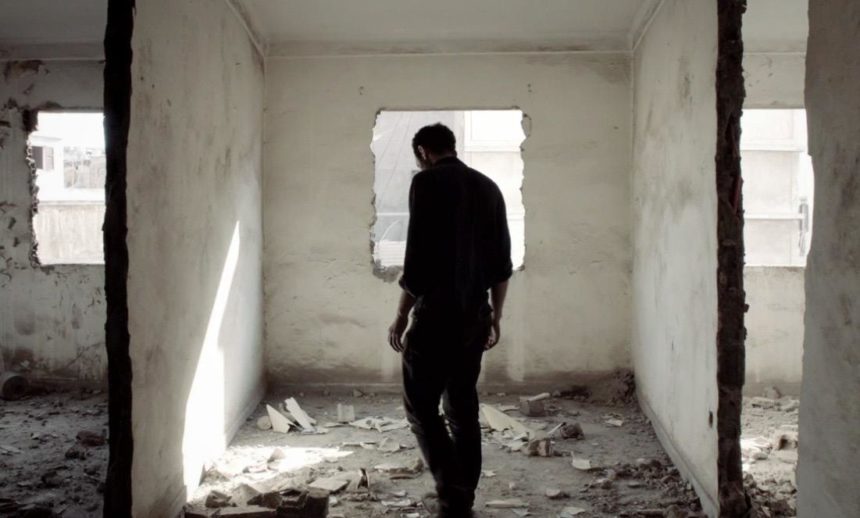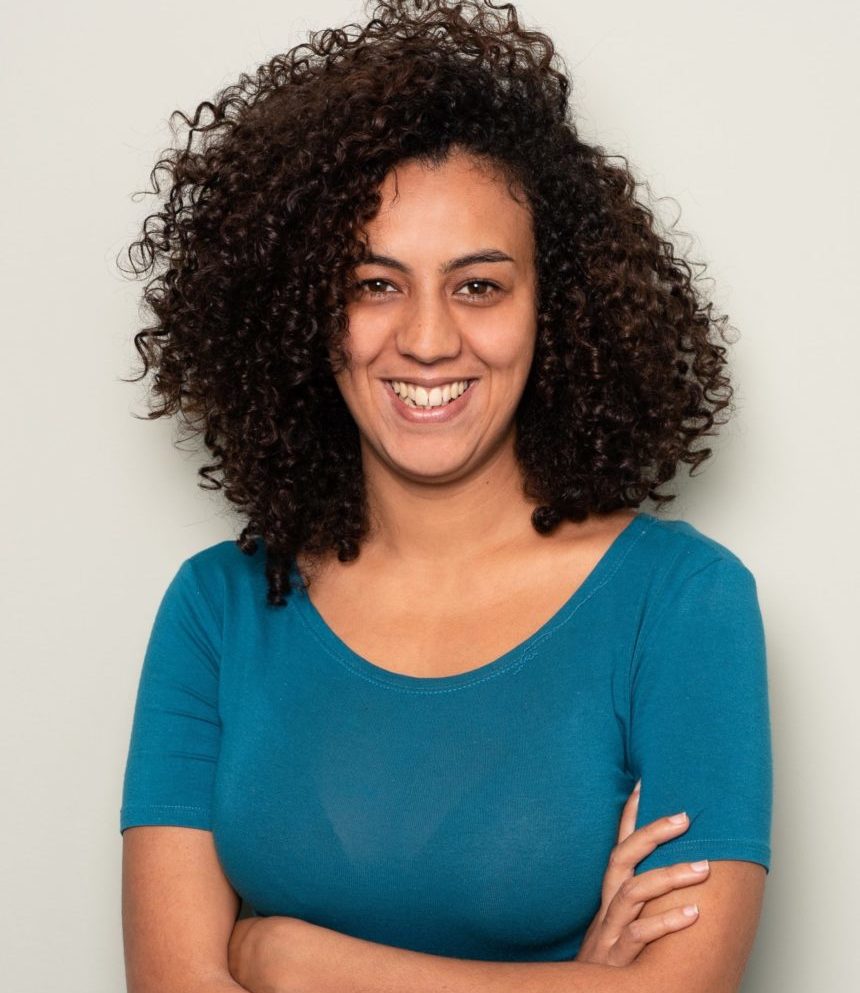Search
To search for an exact match, type the word or phrase you want in quotation marks.
A*DESK has been offering since 2002 contents about criticism and contemporary art. A*DESK has become consolidated thanks to all those who have believed in the project, all those who have followed us, debating, participating and collaborating. Many people have collaborated with A*DESK, and continue to do so. Their efforts, knowledge and belief in the project are what make it grow internationally. At A*DESK we have also generated work for over one hundred professionals in culture, from small collaborations with reviews and classes, to more prolonged and intense collaborations.
At A*DESK we believe in the need for free and universal access to culture and knowledge. We want to carry on being independent, remaining open to more ideas and opinions. If you believe in A*DESK, we need your backing to be able to continue. You can now participate in the project by supporting it. You can choose how much you want to contribute to the project.
You can decide how much you want to bring to the project.

« Dignity is to have a dream, a strong dream that gives you a vision, a world where you have a place, where your participation, as tinny as it is, will change something; you are in a Harem when the world doesn’t need you» .
Rêves de femme : Une enfance au Harem By Fatima Mernissi
The first Moroccan film directed by a female director I watched in a cinema theatre was “The dry eyes” (2003) by Narjiss Nejjar (1971, Tangier). I watched it with my mother. I was fourteen. I remember it was disturbing: a village in the middle Atlas Mountains, inhabited by prostitutes, old and young. Men were visiting them for pleasure. They were strong but accepting their condition. A scene that stroke me: a little girl my age from the village menstruated, the stained piece of clothe running in the river. Few scenes later, the main Character Hala pushes her to enter the world of women subjected to Men pleasure. A man, Fahd who is not like the others, tries to save her, but it’s too late. He opens the door “the client” has finished and we see the little body in despair, on the floor, after the horrific had happened. Nejjar captured the oppression of the female body and its objectification to male pleasure. But not only. Fahd, the outsider, a man like no other around has a different gaze, a tender one. When about to make love to the protagonist Hala, she doesn’t understand his tenderness and shouts at him to take her like a man does. In the last shots, the same man running naked in the snow with make up on, to prove to her that being a man is also showing vulnerability. One of the first nude scenes in Moroccan cinema and maybe the most subversive one: unveiling the male body becomes a challenge to the hyper-sexualisation of the female one, an alternative to the ready-made sexy images in cinema, gender is deconstructed and reconstructed through the filmmaker’s gaze. Corporeality is one of cinema’s favourite subjects, how we live, weave and express our Corporeality says a lot about us as individuals and as social animals. I didn’t grasp everything from that film, but when I knew later that it was a first film I understood a lot about its rawness, honesty yet decency. Few dialogues and a restrained acting style to perfectly portray the unspoken of the oppressed and over-sexualized body of a woman prostitute (or sex worker like the capitalistic trendy vocabulary like to reframe it) and its social and intimate conditions. I grow up and decided that my passion for films is what I want to pursue as a job. I wanted to create images as those running in my head when I daydream. I have watched all sort of films: blockbusters, old Hollywood movies, European and Arab films. I have lived through the nineties as a child, when the so-called “feminist wave” in Moroccan cinema was a trend. But most of these social dramatic films, addressing “women issues” in a direct, advocatory and claiming manner, were made by men, except two directors Farida Benlyazid (to which I’ll come back later) and Farida Bourquia.
I was in a film school, all dreams and hopes high with my peers, female and male, dreaming of becoming the new wave of Moroccan filmmakers. We would watch and talk films night and day, write ideas and tell each other in detail about every script bad or bad that crossed our mind. When one day, a male colleague told me something shocking “Do you really believe yourself? To be honest no female directors have made great films”. I remember being shocked because such idea, had never crossed my mind. I never thought about myself as a “female” director to be. When I shivered to a Kiarostami or Sukurov film, their gender and especially mine was not of interest to me. But then I understood that being a “female” director is something that is becoming a label that will be hard to fight, a label that restrain women from creative freedom, once again. Harems days are over maybe, but the mental Harems are the harder to demolish and women creators are sometimes still captives of these imaginary harems. Fortunately, some women filmmakers have and demolished the walls. From documentary to fiction, Laila Kilani (1970, Casablanca) moves freely between genres and universe. Her debut film “On the Edge” (2011) is a punch in the face: a febrile camera with a panting pace runs after young workers in Tangier Industrial Port-Med. Two young adult girls work at a caned fish manufacture try their best to make end meet in a city where they are strangers. At night, they “invite themselves in” they don’t sell their bodies, like the protagonist announces from the first scenes. She is constantly speaking, in a long uninterrupted monologue that we have to endure as an audience. She doesn’t have the time to sit or think, she moves and talks and walks fast, like running away from time that is ticking. She has to get rid of poverty, from the smell of poverty as embodied in the film by the fish smell stuck to her skin despite her attempts to scrub it every night after work. Here, the body of the female worker is recomposed in its little details: not only the smell, but the way it moves, it looks and it experiences the world. Running against the clock of capitalist exploitation, she has no time to rest, working day in the factory and night as semi-prostitutes. The insanely fast pace is both the result of her hard life conditions but also the way her body fights death, annihilation and crush. No place for love or sexuality, this corporeality is about not being crushed by reality, about survival, is about becoming alienated by work and making a living.
Unsurpassed alienation is also one of subjects explored in “The narrow frame of the night” (2014) by Tala Hadid (1974, London), another debut film by Moroccan-Iraqui director. She had chosen to explore her complex identity by transposing the trauma into a male character. How refreshing! A man forever wandering between foreign and familiar spaces in quest for his fragmented memory and lost brother. The land his family fled due to the ruling regime still hunts him. The consequences of torture and mass killing, political oppression and persecution is the impossibility to live the present or forecast the future. Through Hadid’s gaze, oppressive systems have long lasting effect on perception, memory and dreams. Non-linearity is used to embody a fragmented memory and sense of time that will never recover. The only solution for such tragic path is through endless wandering, while he researches his lost sibling. The body keeps its motion as a way to resist asphyxiation. Tala’s montage is never explanatory, almost mystical, names and events are captured only for their musical and poetic significance, to penetrate the interiority of the character and never to serve a plot. To serve maybe this eternal impossible return to a romanticized paradise, where life has begun and the most loved are lost.

Still from “The narrow frame of the night” (2014) by Tala Hadid
The same quest is one of Nadia the protagonist in “A door to the sky” (1989) by Farida Benlyazid (1948, Tangier). She is this time able to realize the return. On his dying bed, the Moroccan father (played by the late Ahmed Bouanani) calls for his French children for a last farewell. Nadia, a young French bourgeois woman is visiting her agonizing father in Fes. Her mother is French but had lived with the father in Morocco. Nadia is a westerner, when her father dies she mourns over alcohol and cigarettes, refusing to be part of the funeral rituals. Forced by her sister, who is completely embracing her Moroccan and Muslim heritage, Nadia wears a white mourning Djellaba and joins a congregation of women.
She stays at a distance though, hypnotized by the voice of a woman chanting Quran, Kirana. Finally, she gets inside and attends a Hadra session of religious soufi poems chanted by the women. The first discussion Kirana and Nadia have is about corporeality: Kirana urges Nadia to eat even if she is mourning. Every body part, tongue, hands and the guts will all give a testimony on the judgement day over their owner. From the beginning of the film, the sacred words of Qur’an, the void felt by the protagonist Nadia are linked to the way she lives, treats and relates to her body. An embodied spirituality that is calling Nadia, away from her cold intellectualizing western habits that cut her away from really getting into things and connecting to her higher self. From that moment, begins a journey of philosophical learning for Nadia, who not only discovers her roots and starts a battle against her own doubts, but enters a new dimension of reality. Dreams and nightmares, visions and buried memories start flowing at the surface. Strange events happen to retain Nadia from going back to France and stay in the Riad. The journey of Nadia (that I won’t spoil, you will have to watch this beautiful film) is one of spiritual quest, of a woman with a complex identity choosing traditions and mysticism over rationalism and western materialistic world views. The particular corporeality expressed in this film explores what is hidden, what the body and the skin won’t forget even if the mind is busy rationalizing the world. Finally, its through her senses that Nadia reconnect with who she is, and even finds love at the end. Farida Benlyazid Spirituality is not ascetic, it’s fully embracing and mending the body’s wounds and needs.
There are other films directed by female Moroccan filmmakers that I find admirable, in relation to issues related to corporeality, the body and its passions. I stopped on these four filmmakers, as I found remarkable they ways they addressed and explored different aspects of corporeality in Moroccan society in their debut feature films. As I’m working on my debut feature, I need to mend the thread of transmission and look up to my elders for what have been accomplished before and what still has to be, in the near future. Making images through cinema temporality is a striking way to reflect and create realities and understand different aspects of corporeality. Like in “A door to the sky” corporeality and spirituality merge to a new spiritual dimension, only embodied in dreams, after death maybe, and Cinema.
Let’s experience the world through our bodies, and our bodies through the world while contemplating Ibn Arabi’s words in The book of Meccan revelations (1240).
«And to such truth the human being returns in his sleep and after his death, then sees appearances as images by itself, addressing them as it addresses him: bodies without doubt.»
(Featured Image: Still from Une porte sur le ciel (1989) by Farida Benlyazid)

Rim Mejdi is a Moroccan filmmaker, theater maker and a curator based in Marrakech. Mejdi Holds a master’s degree in film Directing from the ESAV (Ecole Supérieure des Arts Visuels of Marrakech). She has written and directed several films and a theater play. Her films and projects have been shown and discussed in international festivals and platforms. She is also the co-initiator of the Ateliers Collectifs of Dar Bellarj and contributor of QANAT. Her work explores complex relationships between collective subconscious and memory and individual aspirations to spiritual liberty/emancipation.
"A desk is a dangerous place from which to watch the world" (John Le Carré)